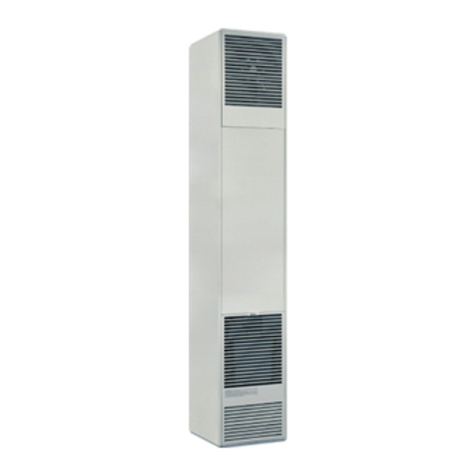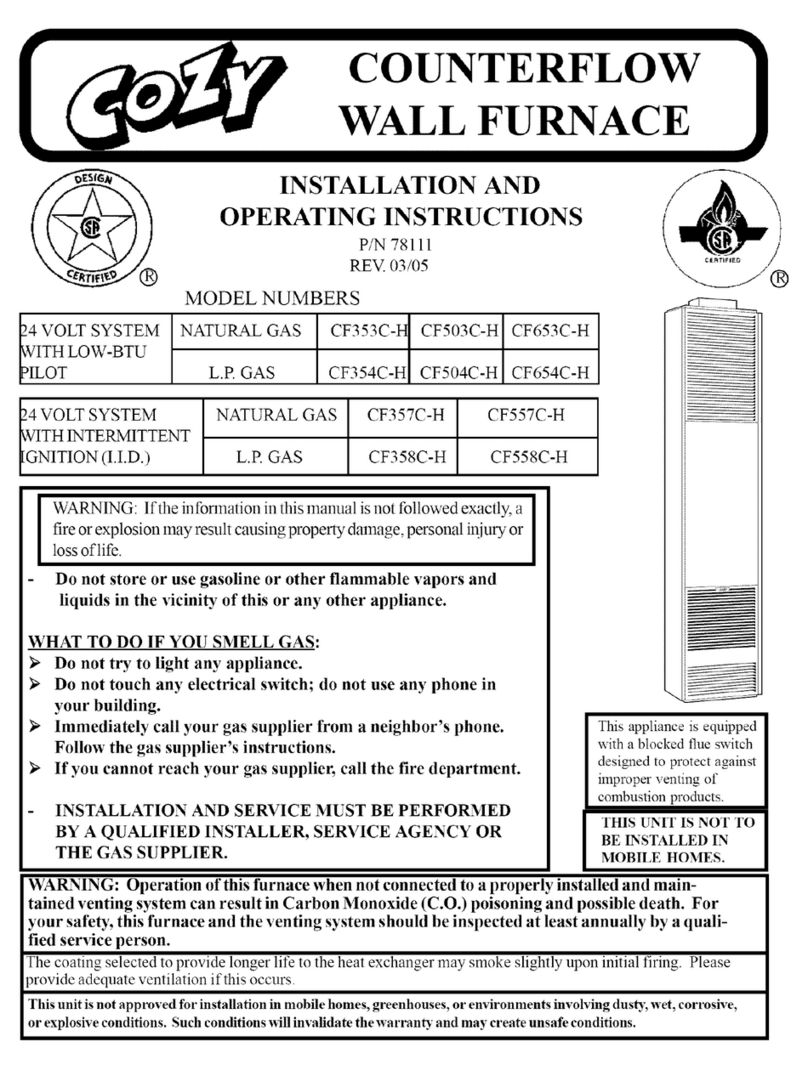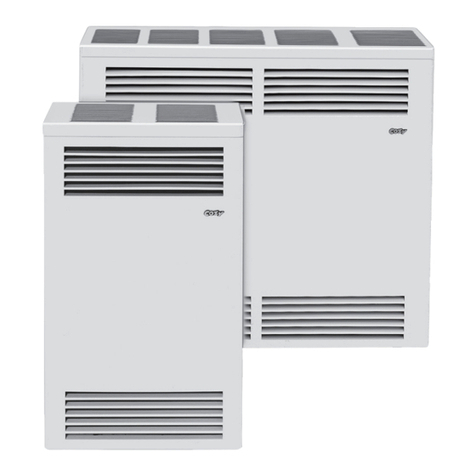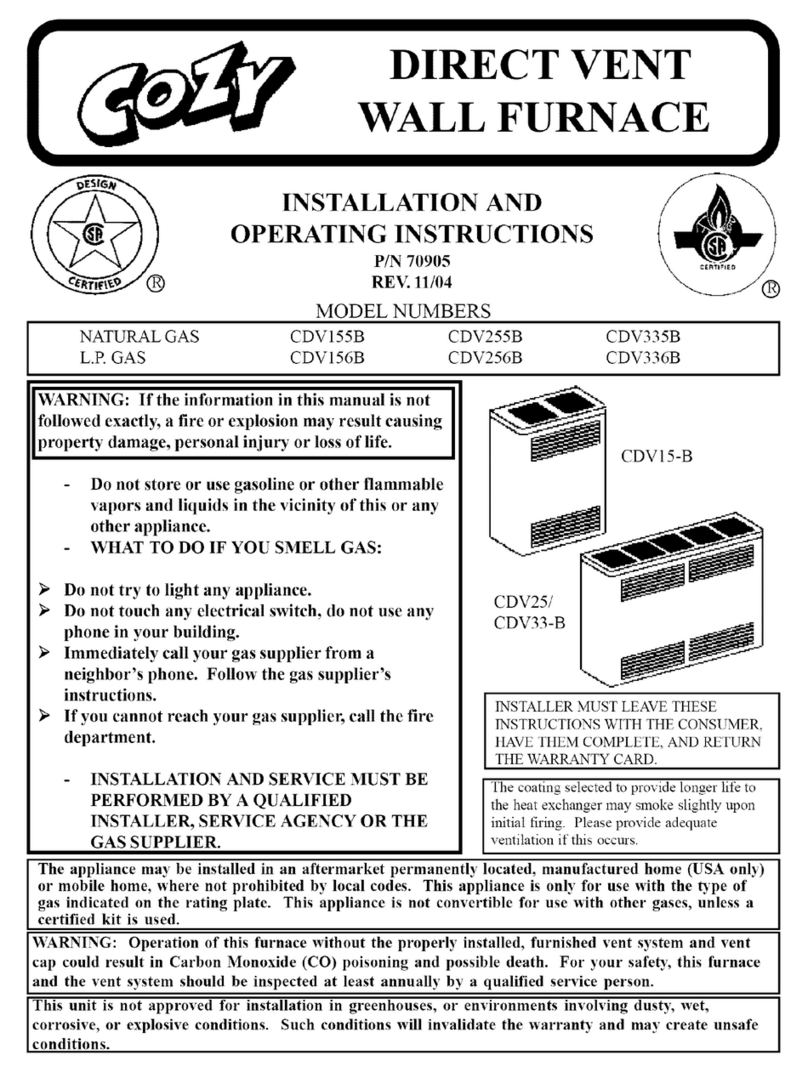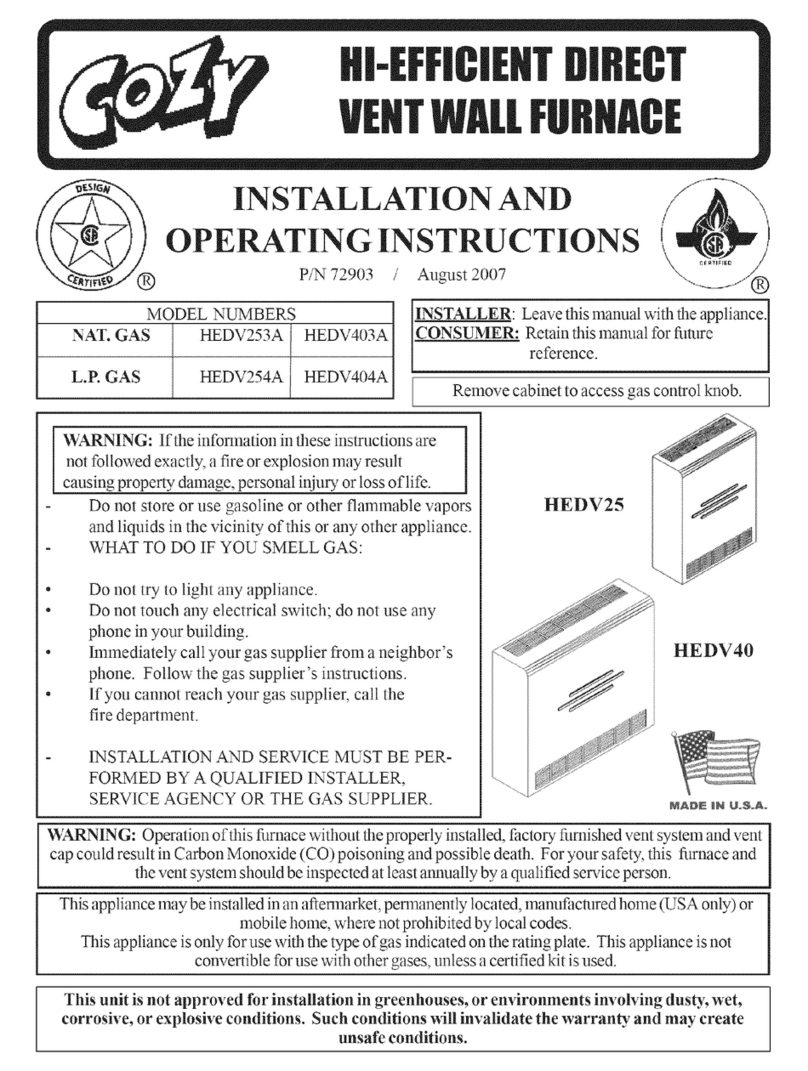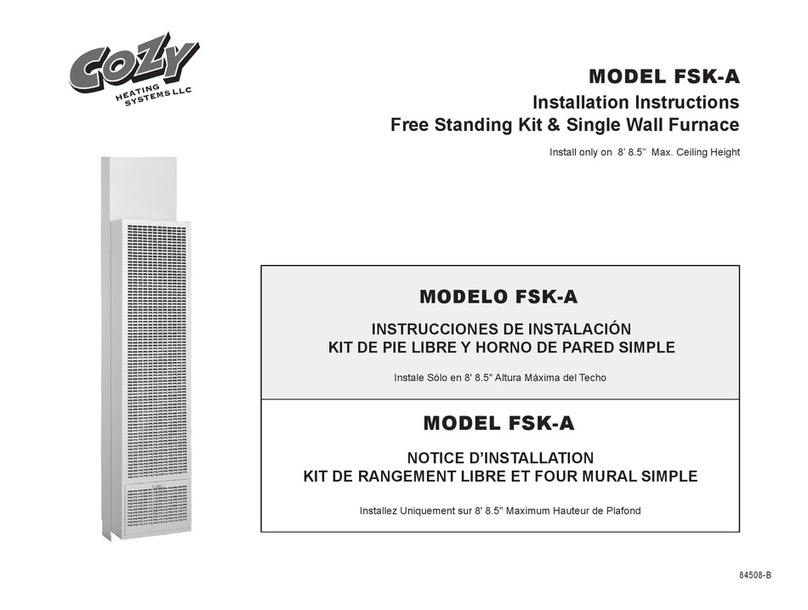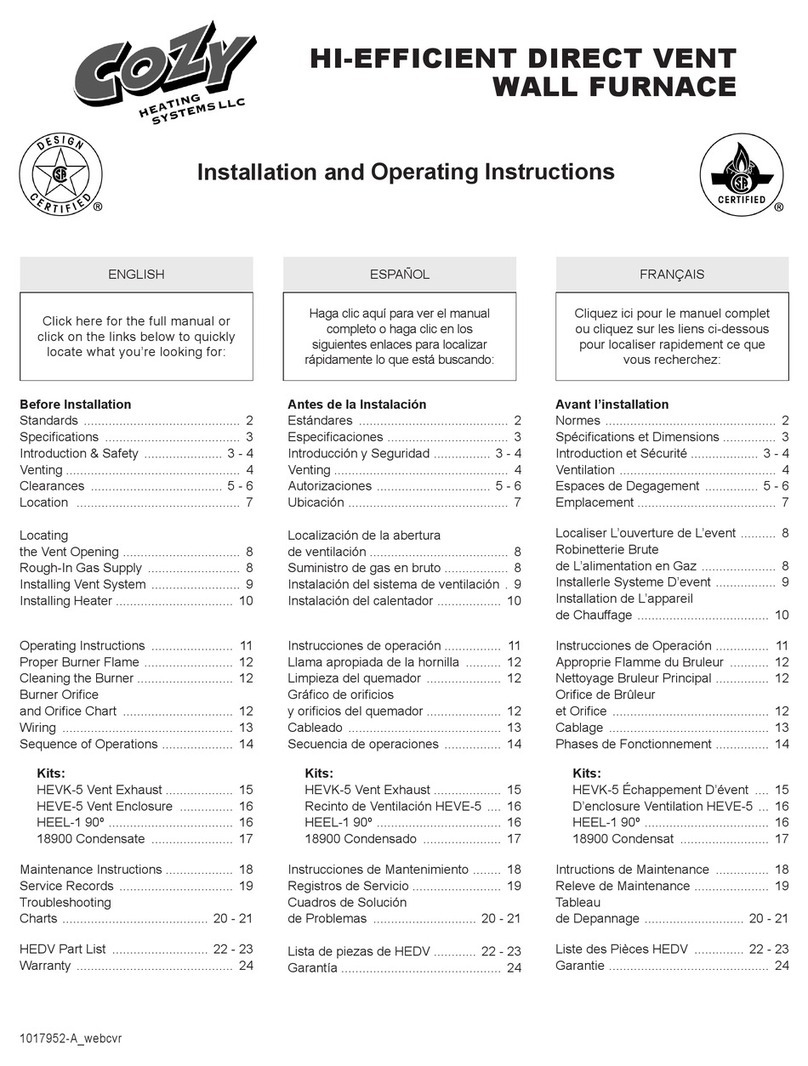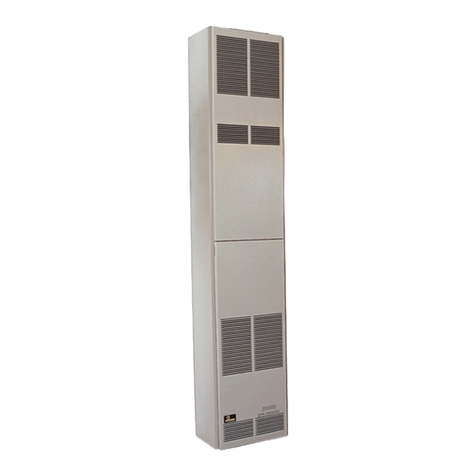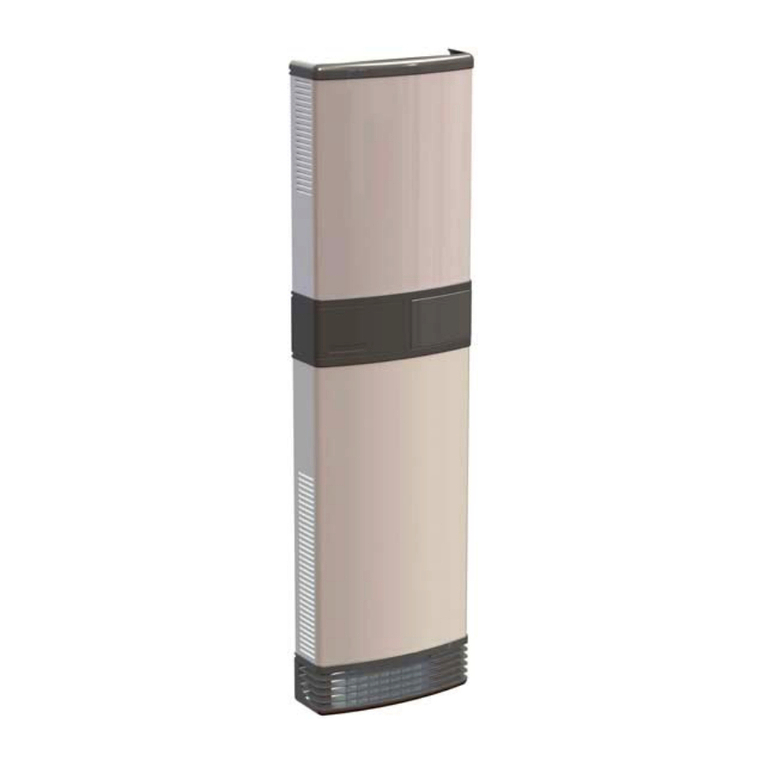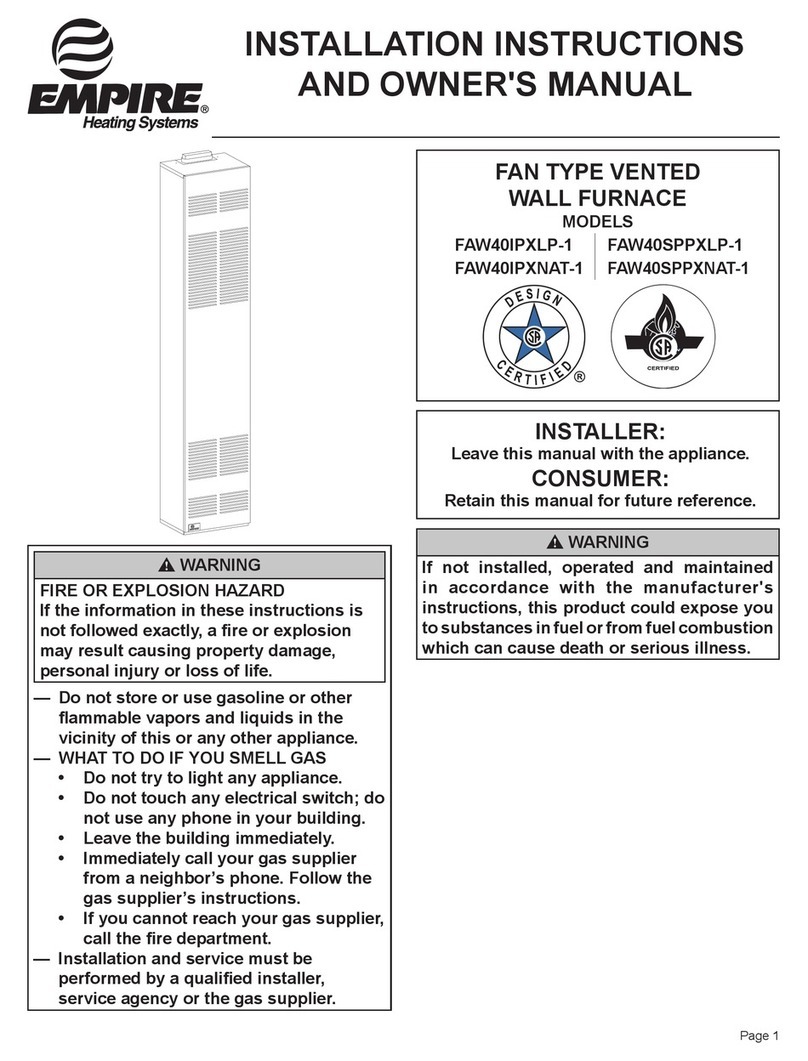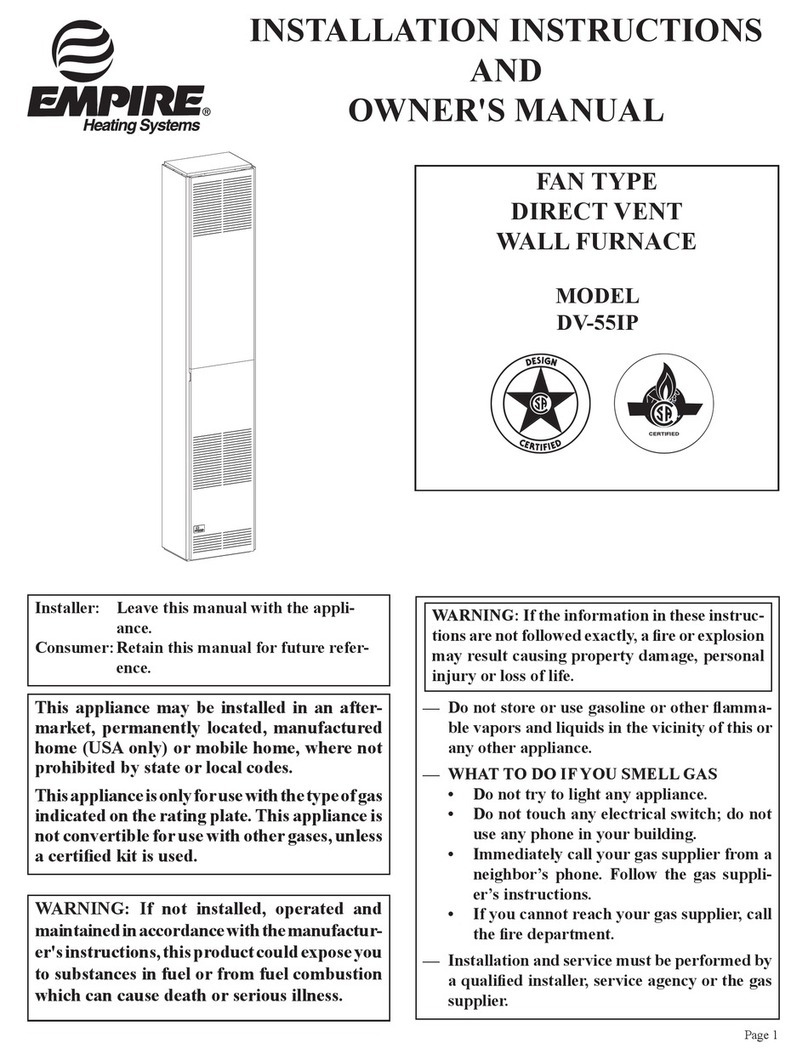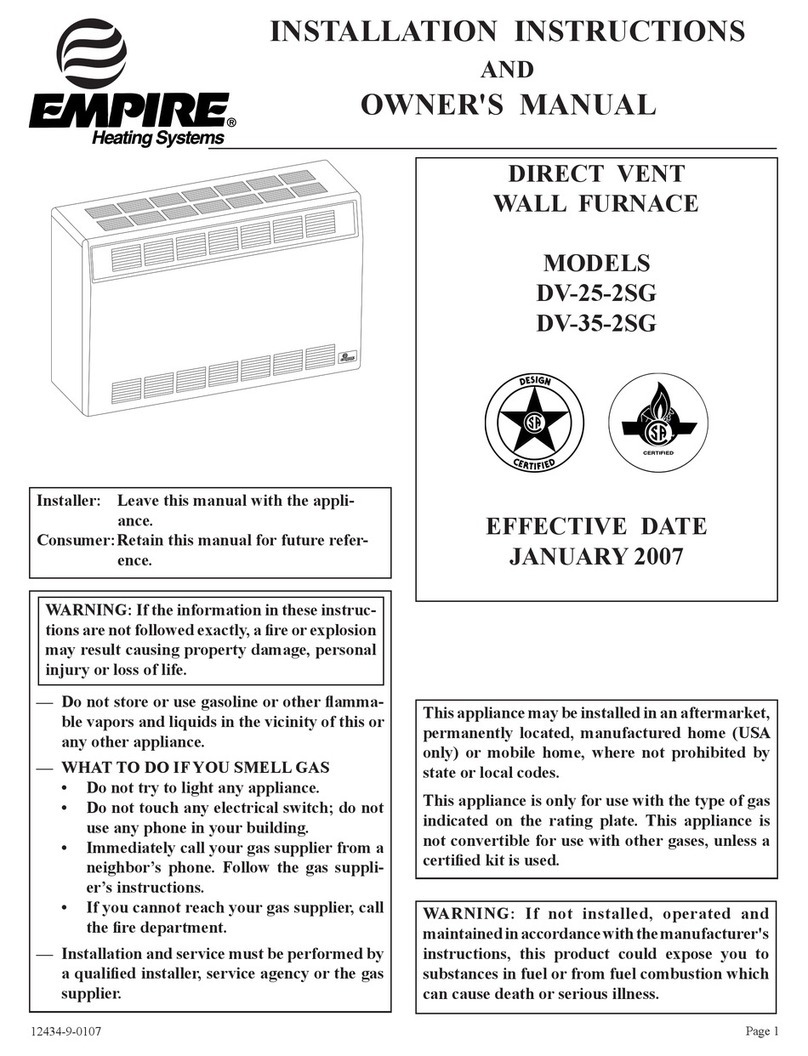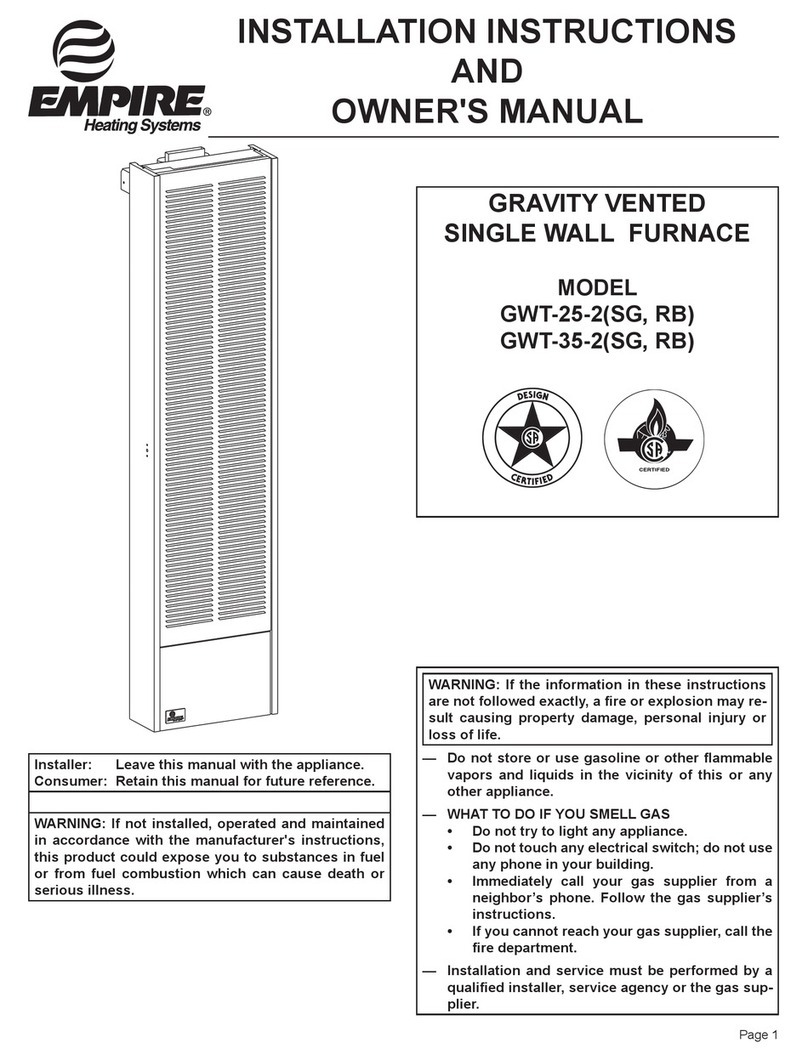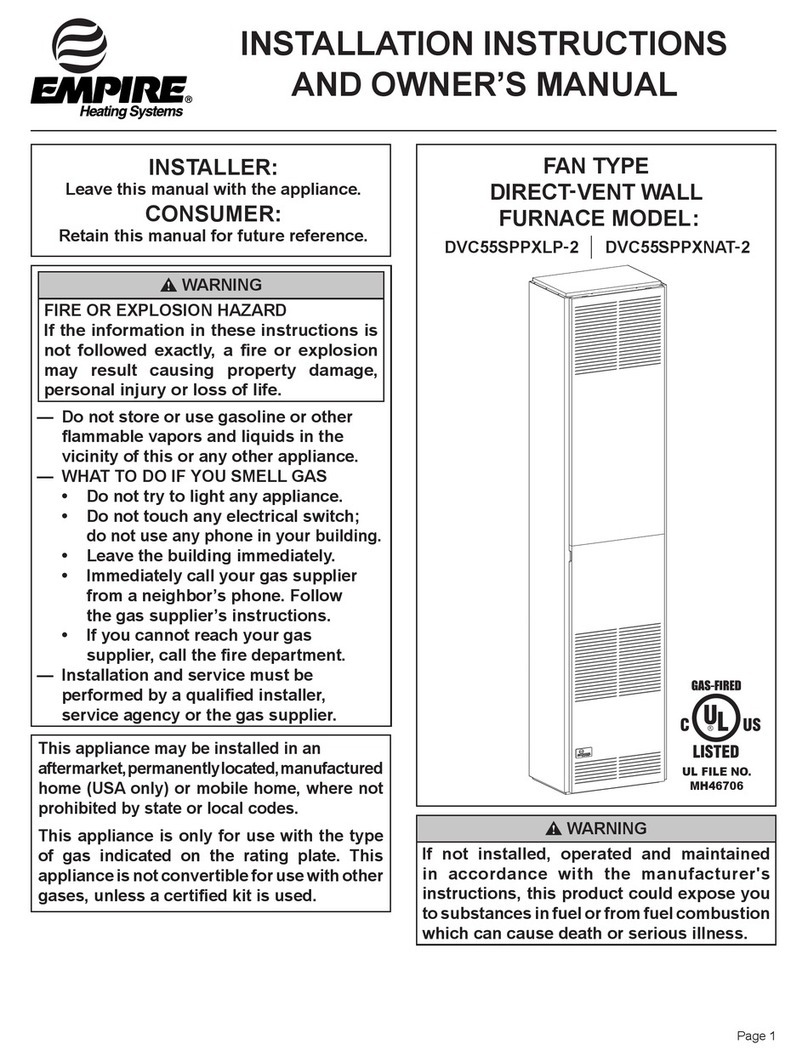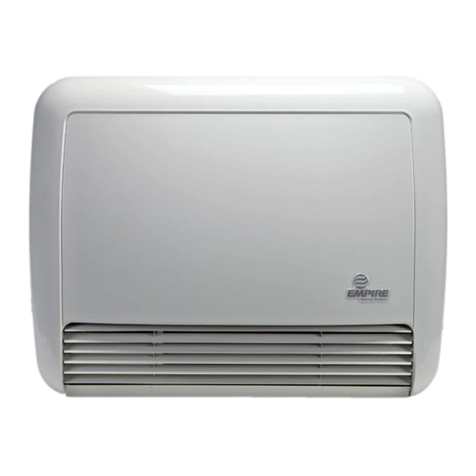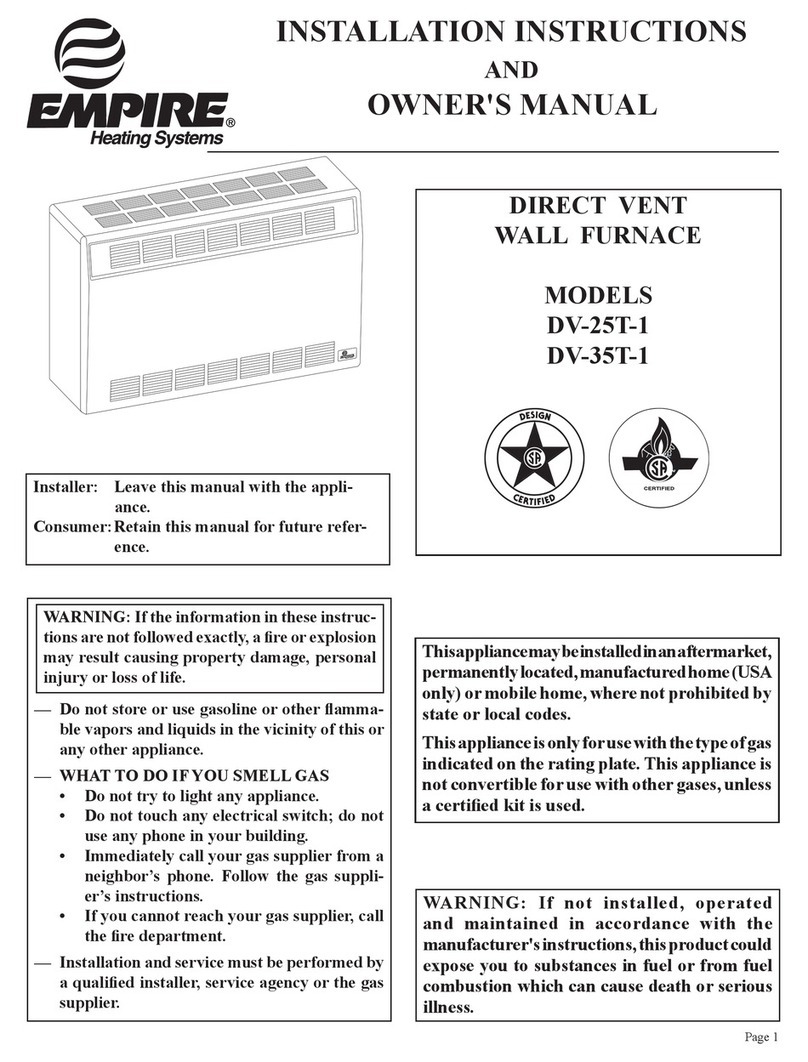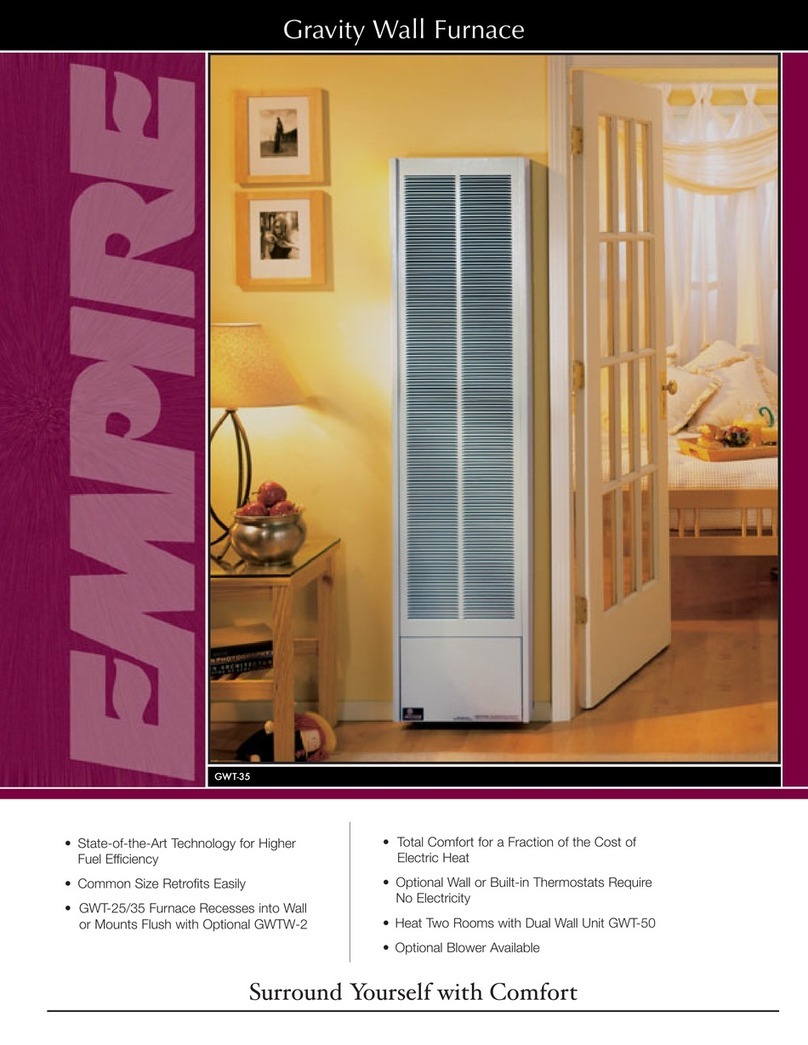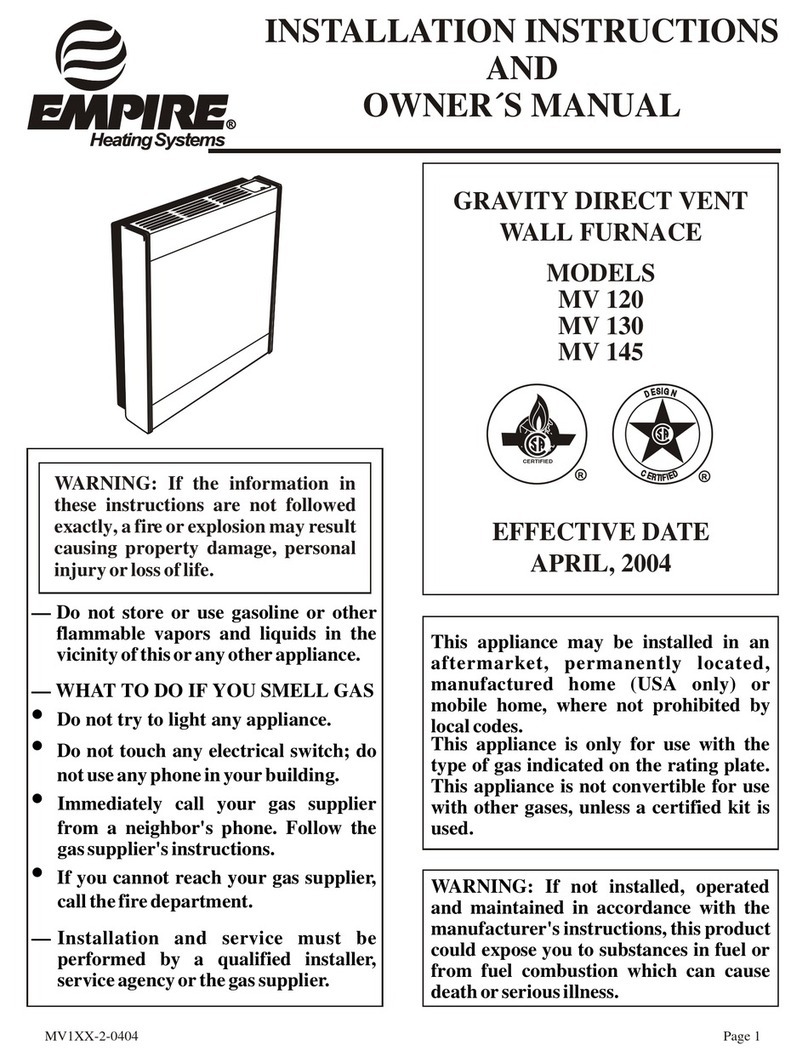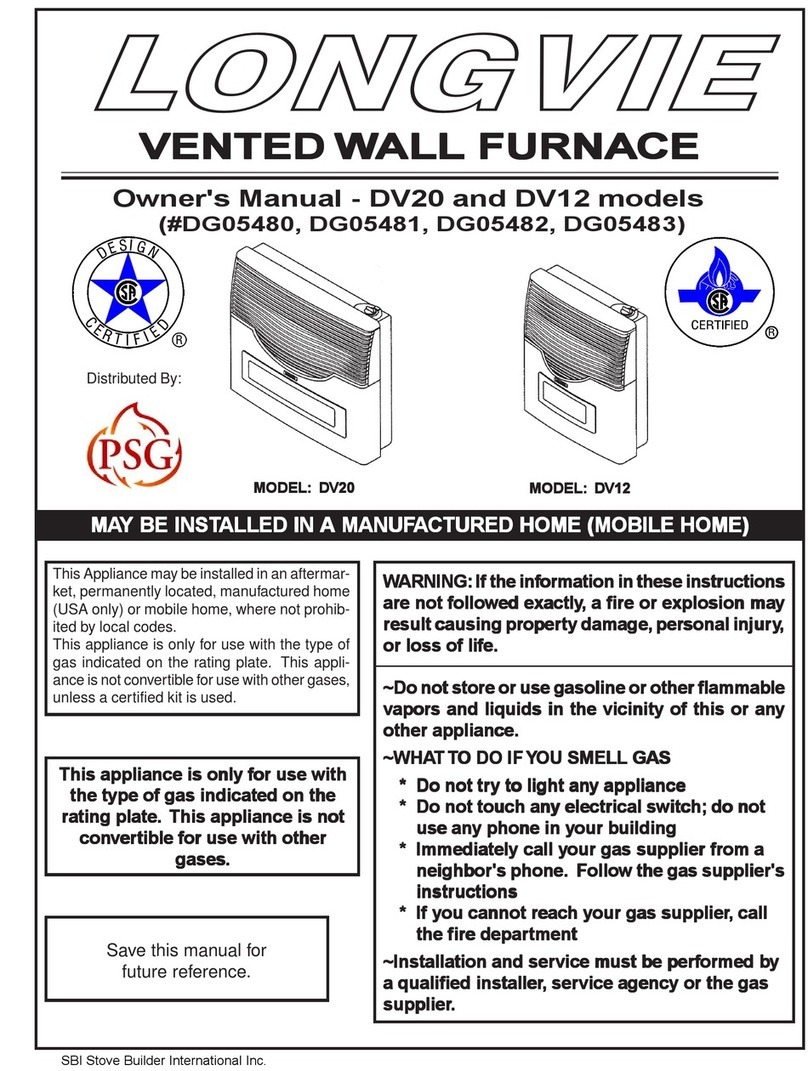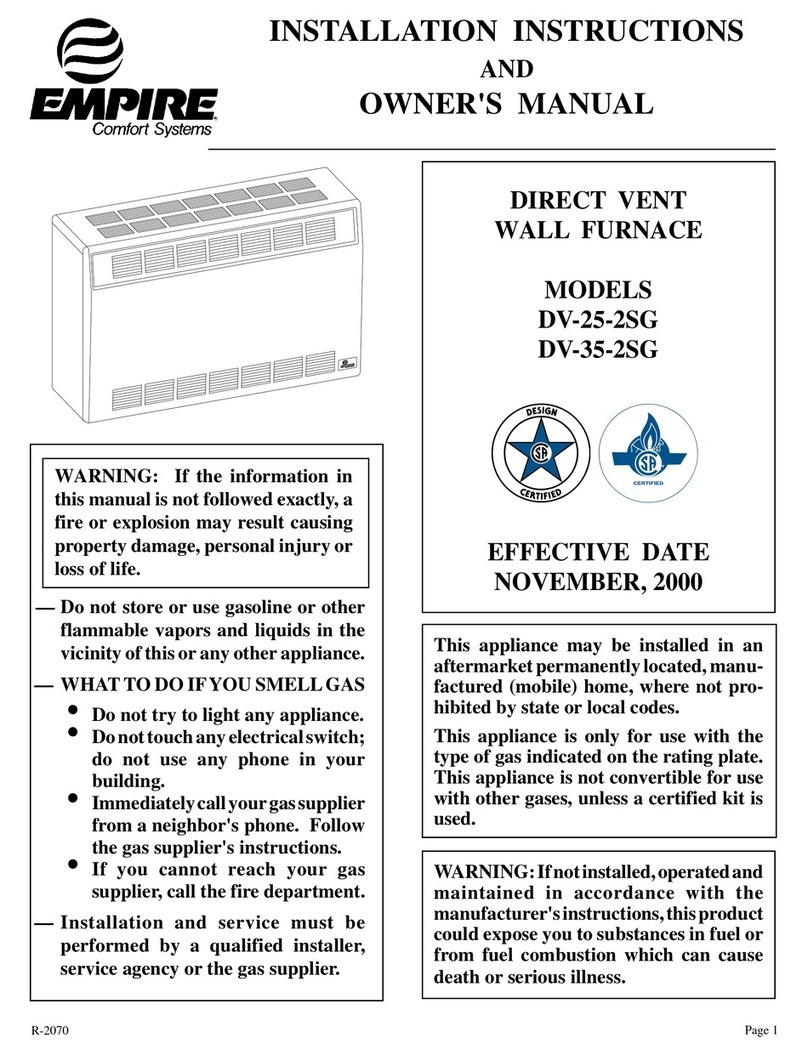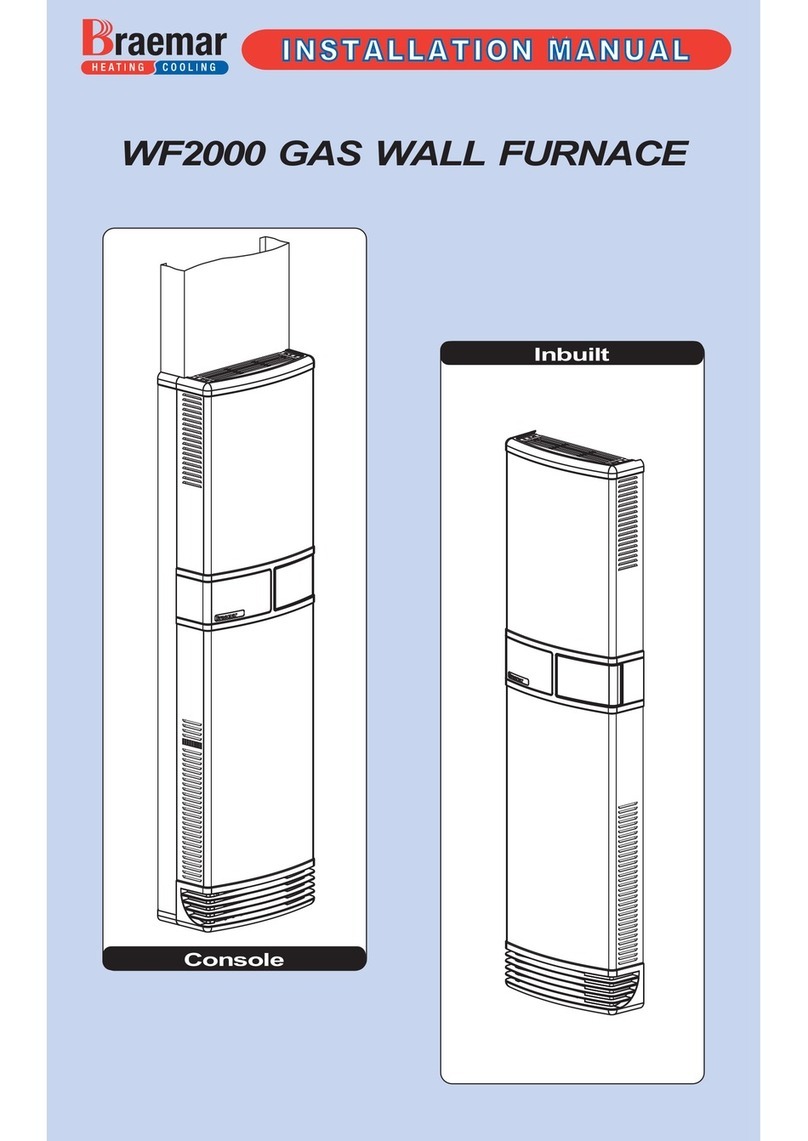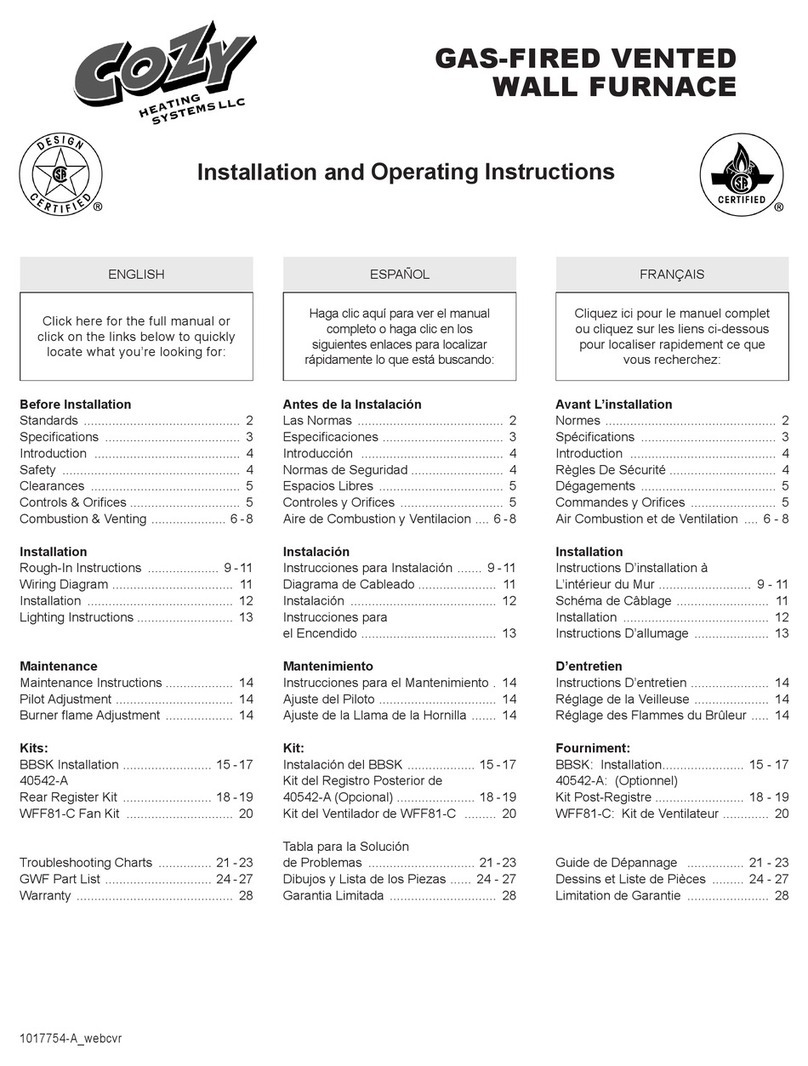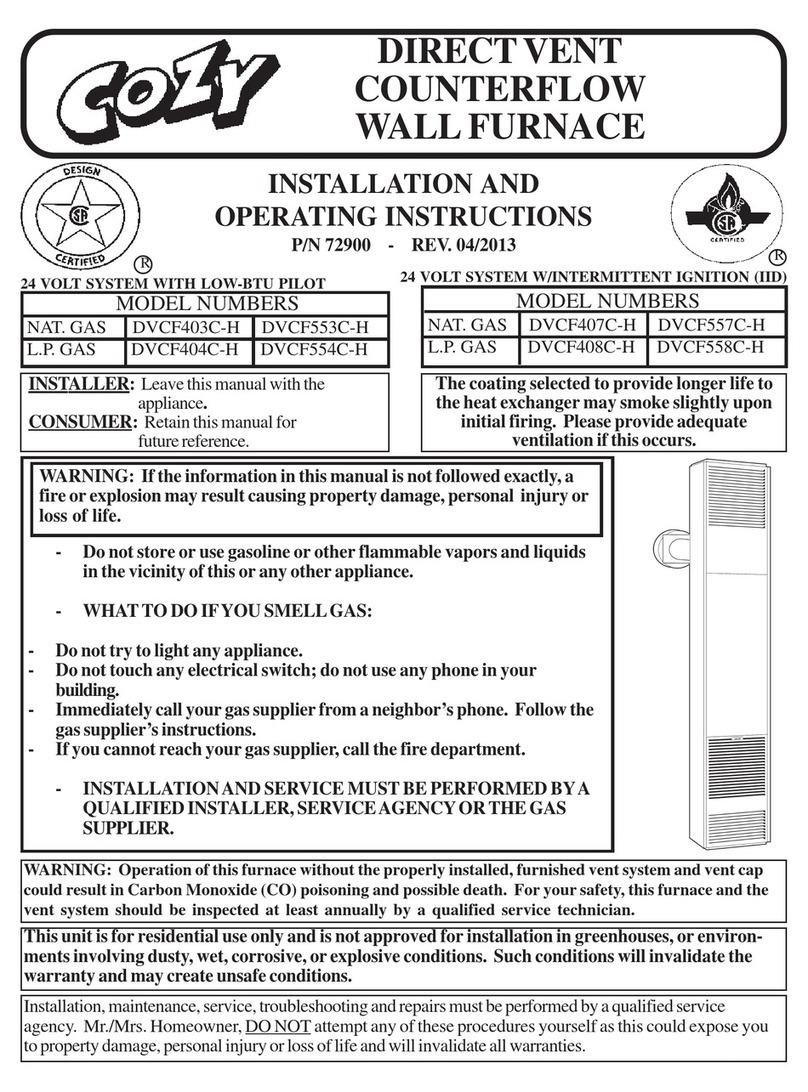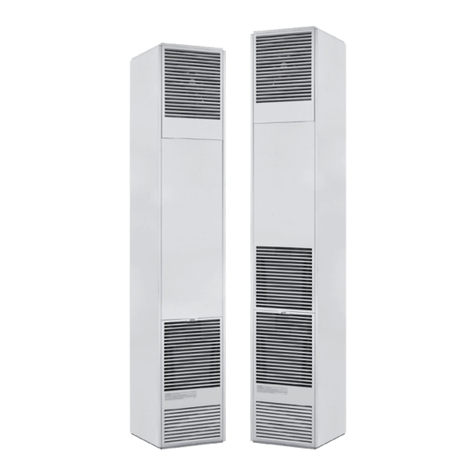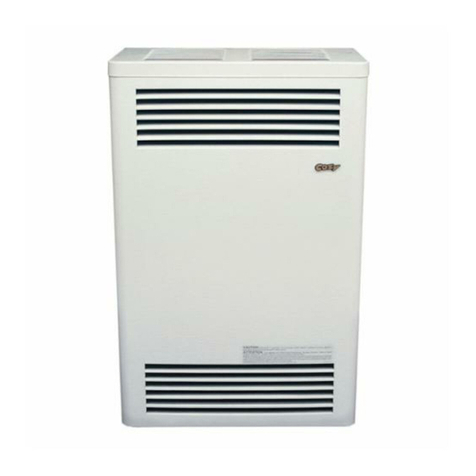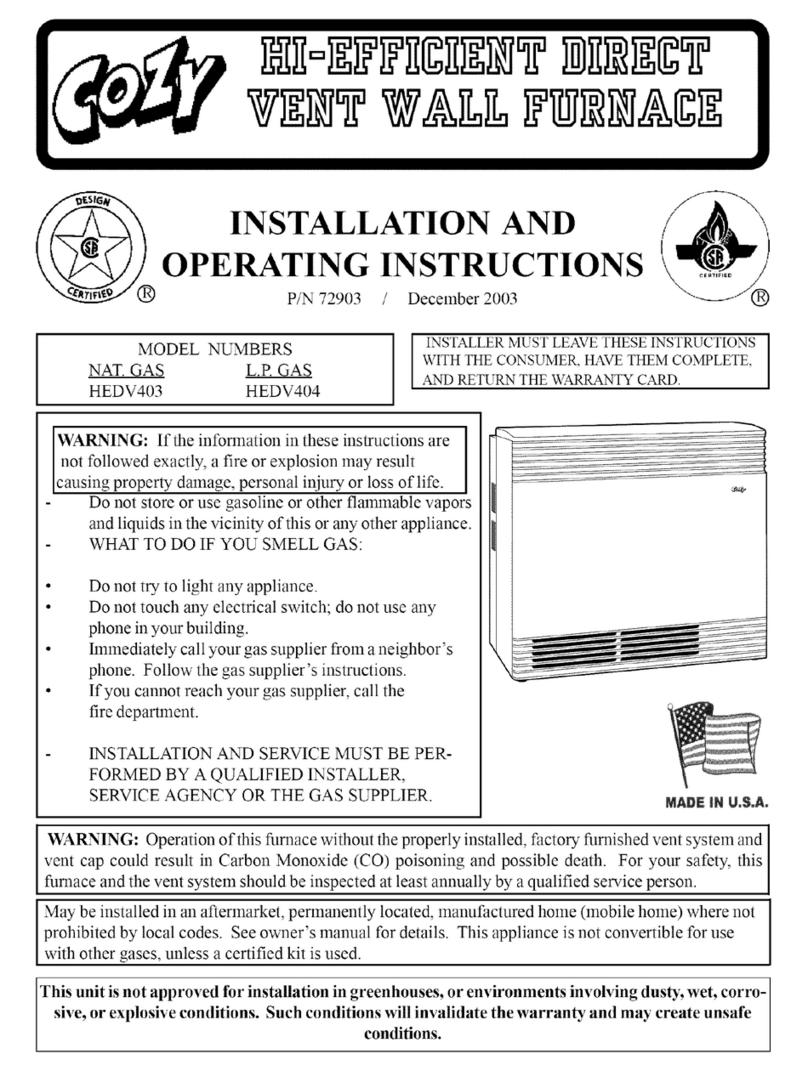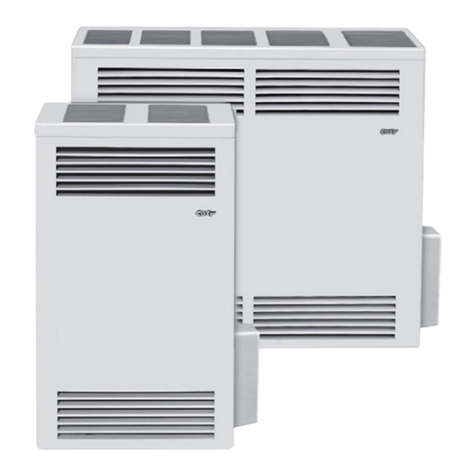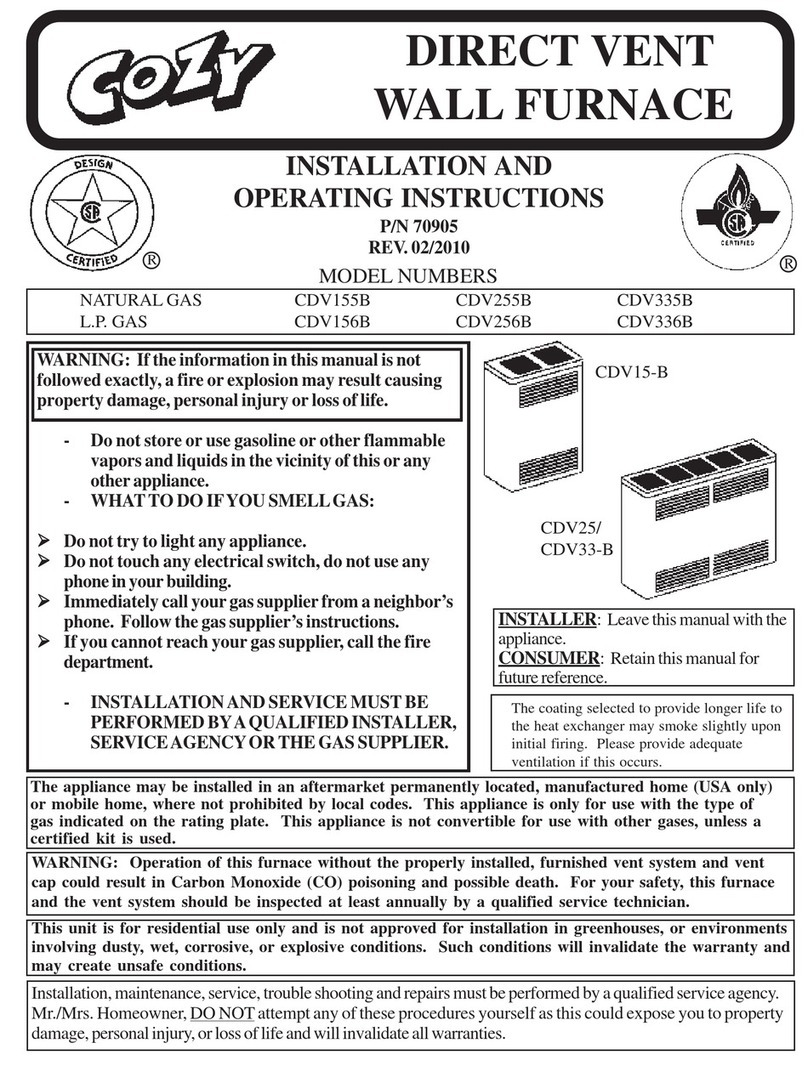
COUNTERFLOW
WALL FURNACE
Installation and Operating Instructions
ENGLISH
Click here for the full manual or
click on the links below to quickly
locate what you’re looking for:
ESPAÑOL
Haga clic aquí para ver el manual
completo o haga clic en los
siguientes enlaces para localizar
rápidamente lo que está buscando:
FRANÇAIS
Cliquez ici pour le manuel complet
ou cliquez sur les liens ci-dessous
pour localiser rapidement ce que
vous recherchez:
1018029-A_webcvr
Antes de la Instalación
Estándares .......................................... 2
Especicaciones .................................. 3
Introducción ........................................ 3
Seguridad ............................................ 3
Ventilación ...................................... 4 - 5
Combustion y Ventilacion ............... 6 - 7
Instalación
Ubicaciones ......................................... 8
Instrucciones aproximadas ............. 8 - 9
Instalación .................................. 10 - 11
Controles ........................................... 11
Piloto y oricios .................................. 11
Instrucciones de encendido ........ 12 - 13
Mantenimiento
Llama del quemador apropiado ......... 14
Operación .......................................... 14
Diagrama de cableado del
bloque de terminales ......................... 15
Interruptor de límite auxiliar ............... 15
Instrucciones de mantenimiento ........ 15
Esquemas de cableado ..................... 16
Kits:
14-PEK Kit de extensión..................... 17
406RR-A Kit de registro trasero ......... 18
407RR-A Kit descarga posterior ........ 18
306SR-A y 30SRB-A:
Kits de descarga lateral ..................... 19
Cuadros de solución de
problemas ....................................20 - 23
CF - Lista de piezas .................... 24 - 27
Garantía ............................................. 28
Antes de la Instalación
Estándares .......................................... 2
Caractéristiques et Dimensions ........... 3
Introduction ......................................... 3
Règles de Sécurité .............................. 3
Ventilation ....................................... 4 - 5
Aire de Combustion et Ventilacion .. 6 - 7
Installation
Emplacements ..................................... 8
Instructions approximatives ............ 8 - 9
Installation .................................. 10 - 11
Commandes ...................................... 11
Veilleuse et L’Orices ........................ 11
Instructions D’allumage .............. 12 - 13
Entretien
Flamme Appropriée Du Brûleur ......... 14
Fonctionnement ................................. 14
Diagramme de Câblage
du Bloc de Bornes ............................. 15
Commutateur Auxiliaire de Seuil ....... 15
Instructions D’entretien ...................... 15
Schéma de Câblage .......................... 16
Kits:
14-PEK Kit D’extension Bouchon....... 17
406RR-A D’enregistrement Arrière .... 18
407RR-A Jeu Avec
Enregistrement Arrière ....................... 18
306SR-A y 30SRB-A:
Kits du décharge latérale ................... 19
Tableau de Dépannage ...............20 - 23
CF - Liste des pièces .................. 24 - 27
Garantie ............................................. 28
Before Installation
Standards ............................................ 2
Specications ...................................... 3
Introduction ......................................... 3
Safety .................................................. 3
Venting ............................................ 4 - 5
Combustion & Ventilation ............... 6 - 7
Installation
Locations ............................................. 8
Rough-In Instructions ..................... 8 - 9
Installing ..................................... 10 - 11
Controls ............................................. 11
Pilot & Orices ................................... 11
Lighting Instructions .................... 12 - 13
Maintenance
Proper Burner Flame ......................... 14
Operation ........................................... 14
Terminal Block Wiring Diagram ......... 15
Auxiliary Limit Switch ......................... 15
Maintenance Instructions ................... 15
Wiring Schematics ............................. 16
Kits:
14-PEK Extension Kit ........................ 17
406RR-A Rear Register Kit ............... 18
407RR-A Rear Discharge Kit ............ 18
306SR-A and 30SRB-A:
Side Discharge Kits .......................... 19
Troubleshooting Charts .............. 20 - 23
CF Part List ................................. 24 - 27
Warranty ............................................ 28
